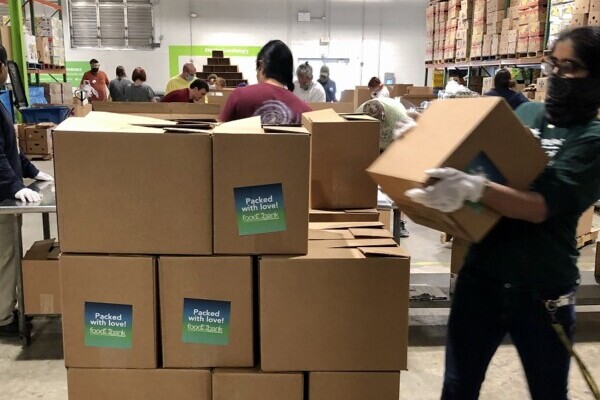When our national network released its annual update on hunger prevalence recently, many observers in the media and even government were surprised.
But for those of us on the front lines, the fact that 1 in 7 people are struggling with food insecurity has been our reality for quite some time.
No-cost markets, pantries, and meal sites across the 34 counties we serve have long reported increasing demand. Many see more families today than they did at the peak of the pandemic. The data, it turns out, is just catching up.
Some leaders have asked how this could be possible — and I get it. By a host of measures, our economy has recovered from the pandemic’s impacts; employment is rising; profits and productivity are up in most sectors.
The reality is that far too many people who are working, sometimes two or three jobs, can’t make ends meet.
Housing, healthcare and other essential resources are getting more expensive, and the state and federal support that kept families afloat during the pandemic is now drying up.
Add in the challenges facing seniors with fixed incomes, along with the summer loss of school-provided meals for thousands of kids, and the result is near-unprecedented hunger in North Carolina and beyond.
The Food Bank is the central hub of a strong and resilient network — and we’re doing all we can to keep food flowing to people and communities who need it most. But if the pandemic taught us anything, it’s that it takes a sustained effort at all levels to meet a major crisis head-on. Our experience — and now the data
— tells us that hunger has absolutely reached crisis levels.
So if you’re able, now is the time to dig deeper.
Donate time in our warehouses. Give online to support our efforts. Organize a virtual food drive. Share information with neighbors. Advocate for the investments and changes we need to prevent this hunger crisis from getting worse.
Because there’s nothing this community can’t overcome when we work together.

Thanks for all you do,
Anne Lloyd
Chair, Board of Directors
There are a host of ways to make a difference right now in the fight to end hunger. If you’re able, please take a minute to lend your time, your voice, or your financial support as we write the Food Bank’s next chapter together!







